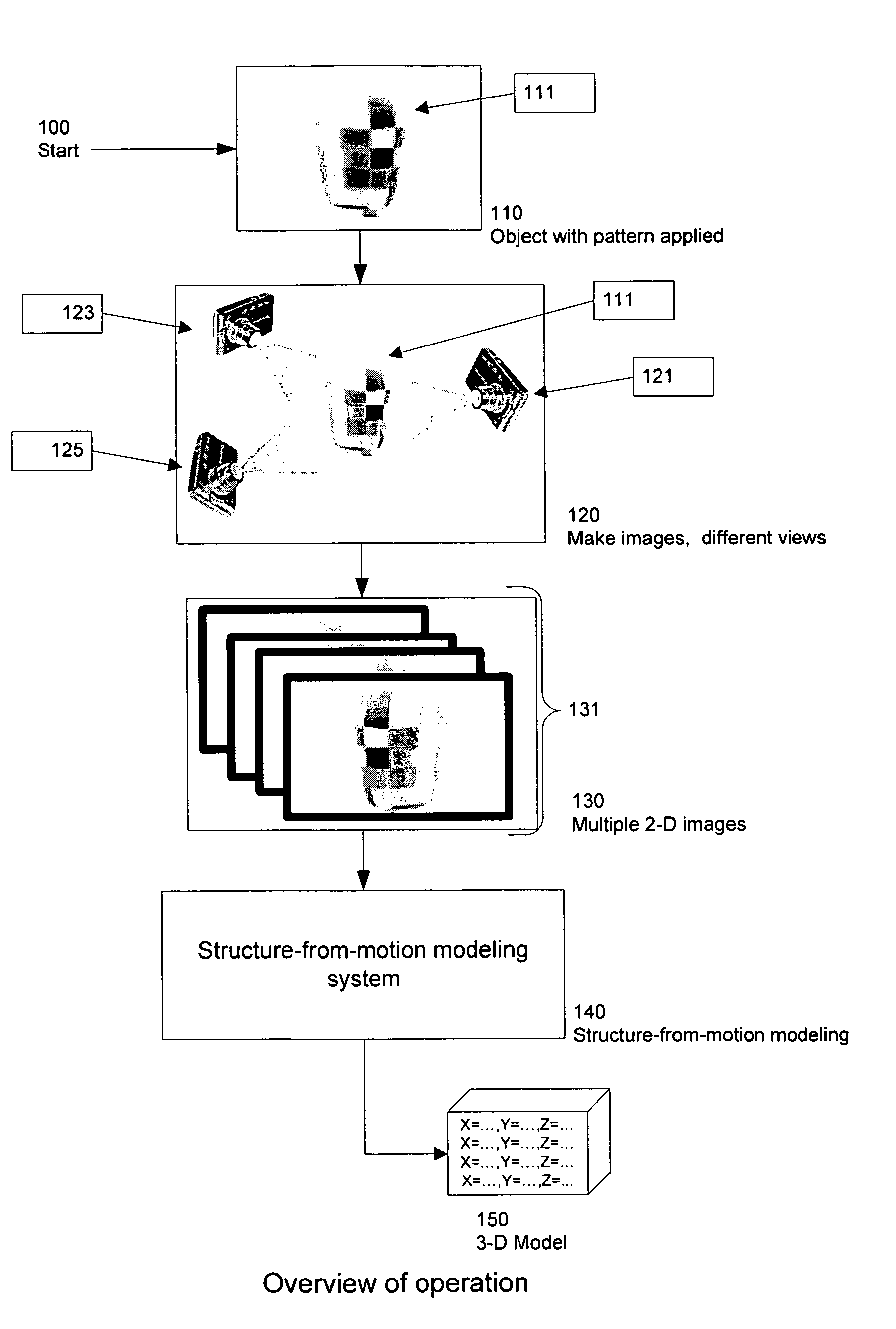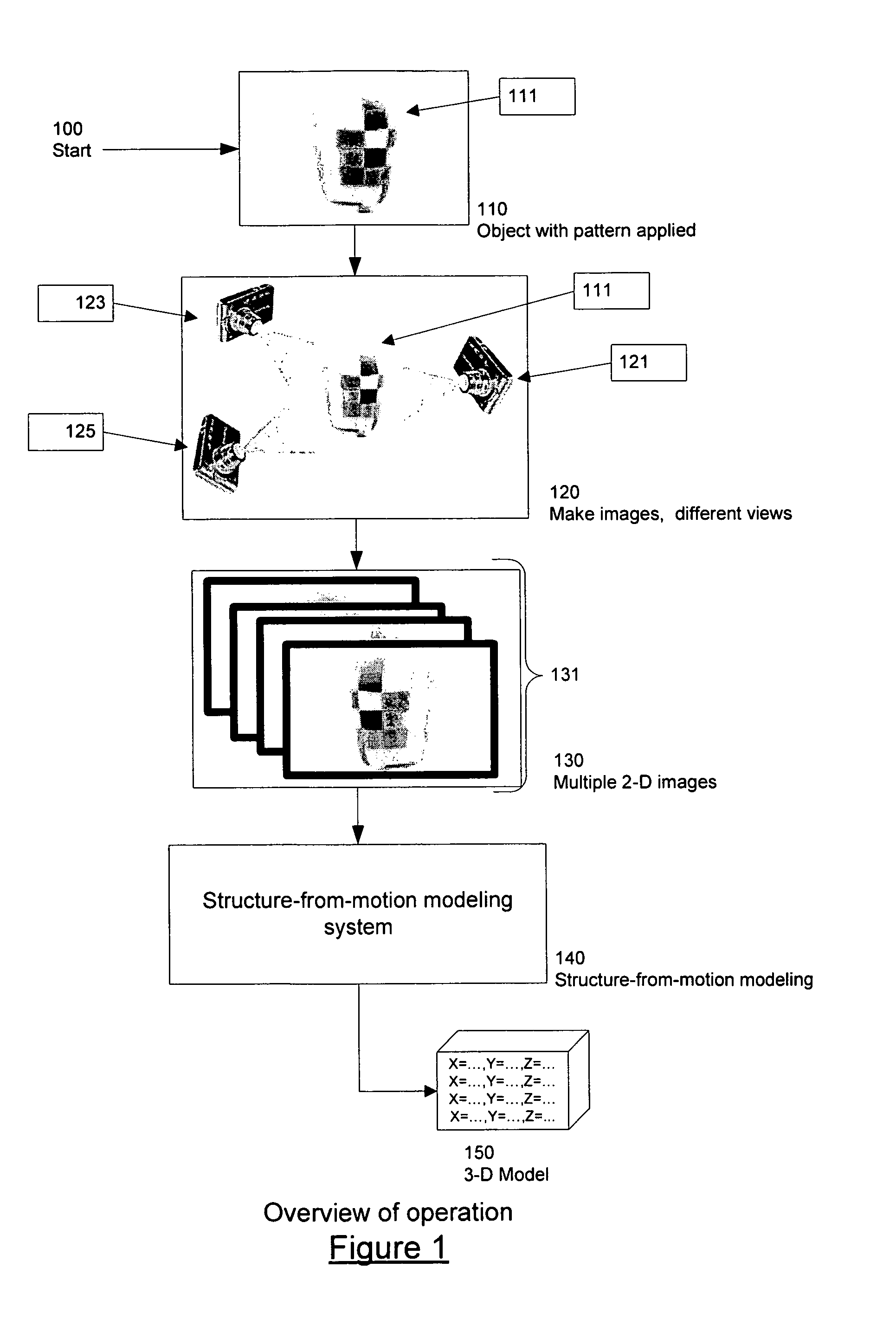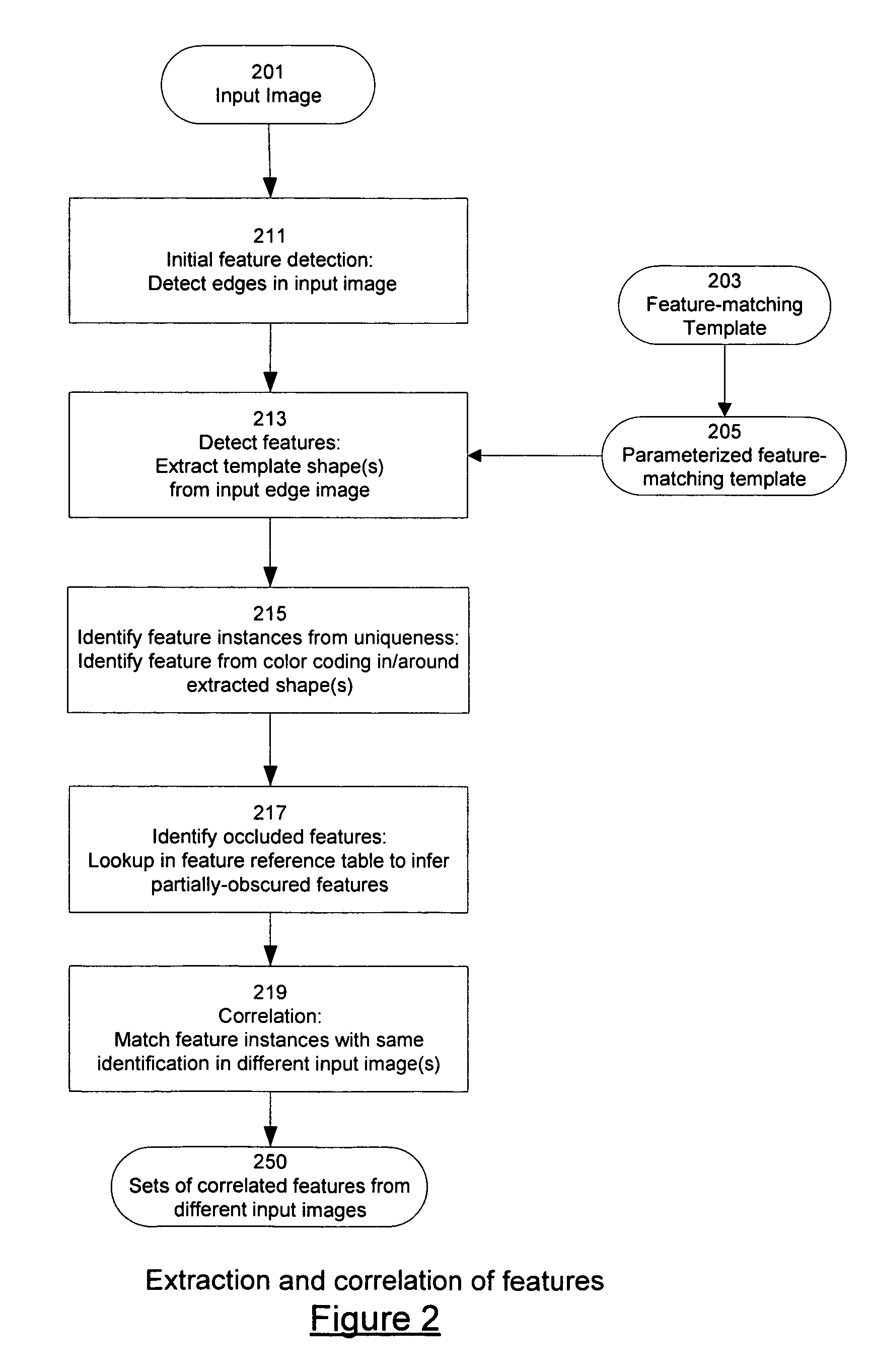Simple techniques for three-dimensional modeling
a three-dimensional modeling and simple technology, applied in the field of simple techniques for, can solve the problems of difficult or expensive use for ordinary consumers, difficult or expensive to be used in applications such as selecting or fitting clothing, modeling the shape of an object, and a part of the human body
- Summary
- Abstract
- Description
- Claims
- Application Information
AI Technical Summary
Benefits of technology
Problems solved by technology
Method used
Image
Examples
embodiment
Examples From a Preferred Embodiment
[0083]FIG. 3 describes two data structures of the preferred embodiment mentioned in the description of FIG. 2.
[0084]300 illustrates an entry in the feature reference table of the preferred embodiment.
[0085]301 is labeled Feature ID, a unique key identifying the feature of this entry in the table.
[0086]303 is labeled Body Part. In the preferred embodiment of the garment there may be different patterns for the parts of the garment that cover particular parts of the body. The different parts of the body are modeled as submodels of the entire body. Where this is done, a pattern element needs to be unique only within the pattern for the submodel. The Body Part 303 is an identifier that indicates the body part where this feature may appear: e.g. torso, left leg, right arm, left pinky finger according to the particular form of the garment. The identifier thus serves to identify the submodel to which the pattern applies.
[0087]305 is a set of values statin...
PUM
 Login to View More
Login to View More Abstract
Description
Claims
Application Information
 Login to View More
Login to View More - R&D
- Intellectual Property
- Life Sciences
- Materials
- Tech Scout
- Unparalleled Data Quality
- Higher Quality Content
- 60% Fewer Hallucinations
Browse by: Latest US Patents, China's latest patents, Technical Efficacy Thesaurus, Application Domain, Technology Topic, Popular Technical Reports.
© 2025 PatSnap. All rights reserved.Legal|Privacy policy|Modern Slavery Act Transparency Statement|Sitemap|About US| Contact US: help@patsnap.com



